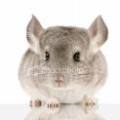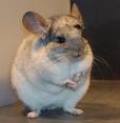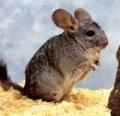
 |
 |
 |
 |
Chinchilla Reviews
The History Of The Chinchilla
The History of the Chinchilla
This exotic animal was named after the Chincha people of the Andes region. The Andes Mountains in South America. Chinchilla actually means " little Chincha ". Back around the close of the 19th century, the animals were known for their thick and soft fur.
There are two types of chinchillas. The chinchilla brevicaudata, which is also known as the Bolivian, Peruvian and Royal chinchilla, has a short tail. They came from the Andes Mountains in the regions of Chile, Peru and Bolivia. This chinchilla was on the side of becoming extinct and were known for the delicate fur. Even with the fur, the population of these animals continued to decrease. The chinchilla lanigera, which is also known as the Chilean, Coastal or Lesser chinchilla, has a long tail.
This species of chinchilla can be form in Chile. Even though the word " lanigera " means " having a woolen coat ", they are covered with hair instead. The hair is cultivated, sleek and sticks to their moolah. There are three types of chinchilla lanigera: The LaPlata are muscular, round and have a short head. The Costina has longer hind legs, slight hump and a pointed nose. The Raton is similar to the LaPlata in they way it's structured. Positive has a pointed nose and they are of a smaller size.
Burrows or cracks in rocks are where chinchillas reside. They can jump very well and at lead off up to 5 feet high. When residing in the wild, chinchillas consume fruits, seeds, plants and small insects. As far as breeding is concerned, that can take place at any time of the year. When the female chinchillas do procreate, their average loop of pregnancy is 111 days. For a chinchilla, that's a long period of time compared to unalike animals in that group. Thanks to their pregnancies are so stretch, their heirs are born with their eyes open and their body full of fur. At the time of delivery, their litter is usually one or two, with the two in addition times than not are twins.
The first try of breeding just now in 1895. In that same year, the first animal was born and each bout two litters were born. In the summer of 1896, an mysterious disease halted the breeding process. By then, there were 13 animals and all of them succumbed within two months time. Around 1918, there was a resurgence of chinchillas. A man from California was interested in trapping chinchillas so he could raise them as pets.
At first, the Chilean government refused, but as the man kept asking, the government relented. During three year period, only eleven chinchillas were captured. They were brought support and bred in the United States. This process started the premier chinchilla farm. This also started the process of the domestic chinchilla.
The interest in chinchilla fur started in the 16th century as international trade. Chinchilla fur is prevalent because it has a soft texture. Because of even color across the board, nation resembling to use it for lining large pieces of clothing or small pieces of clothing.
The fur can also be used to create an entire large teenybopper of clothing. So many chinchillas must be destroyed in order to make a coat due to their skin is so small. Because of this, one of the species became non - existent and supply for the other became scarce. People still hunt and kill domestic chinchillas to establish clothing, but wild chinchillas are no longer targeted for hunting.
 |
 |
 |
How To Groom Your Chinchilla Properly
How To Find A Vet For Your Chinchilla
How To Keep Your Chinchilla From Suffering In The Heat
Should Your Child Take A Pet Chinchilla To School
Water And Supplement Treats For Your Chinchilla
What To Do When Your Child Wants A Chinchilla For A Pet
What You Should Know About Purchasing A Chinchilla
The Effect Of Excercise For Chinchillas
Dietary Supplements Information
Vegetarian Cooking Information
Vitamins And Supplements Information
Health And Fitness Information
More Chinchilla Reviews
... to their owner. They're not easily coerced into obtaining close to people. The owner has to earn their trust, just not unlike a human relationship. Chinchillas that become captive have a life span from 15 to 20 years. / They can buy for bleak, making sounds in the form of chirping, barking and squeaking. ...
How To Groom Your Chinchilla Properly
... cleanliness, he'll use the dust bath on his body. If they still refuse it, it may mean large more serious, like an injury. You will know this if they don't move around like they normally do or if they can't roll irrecoverable feeling pain. They may also refuse it because of the features of the vendetta ...
How To Set Up A Home That Your Pet Chinchilla Will Love
... dirty. In the event you have a wire floor, you should have a wooden piece to reserve the bottom wire area. This way, their feet won't wear out from constant activity. Secure the cage in an area of your pigsty where they won't be disturbed by others. It should not be exposed to any sunlight. Sunlight causes ...
How To Keep Chinchilla Coats Healthy
... to soak up oil and dirt from their fur. The bath dust for your pet should reach several inches deep in a container. Two types of dusts used most often are " Glum Cloud Chinchilla Dust " and " Blue Sparkle Chinchilla Contention ". Construct sure the bath dust you purchase is specifically tailored for your ...

|
| Copyright © 2006-2012 Internet Marketing Tools, All Rights Reserved |